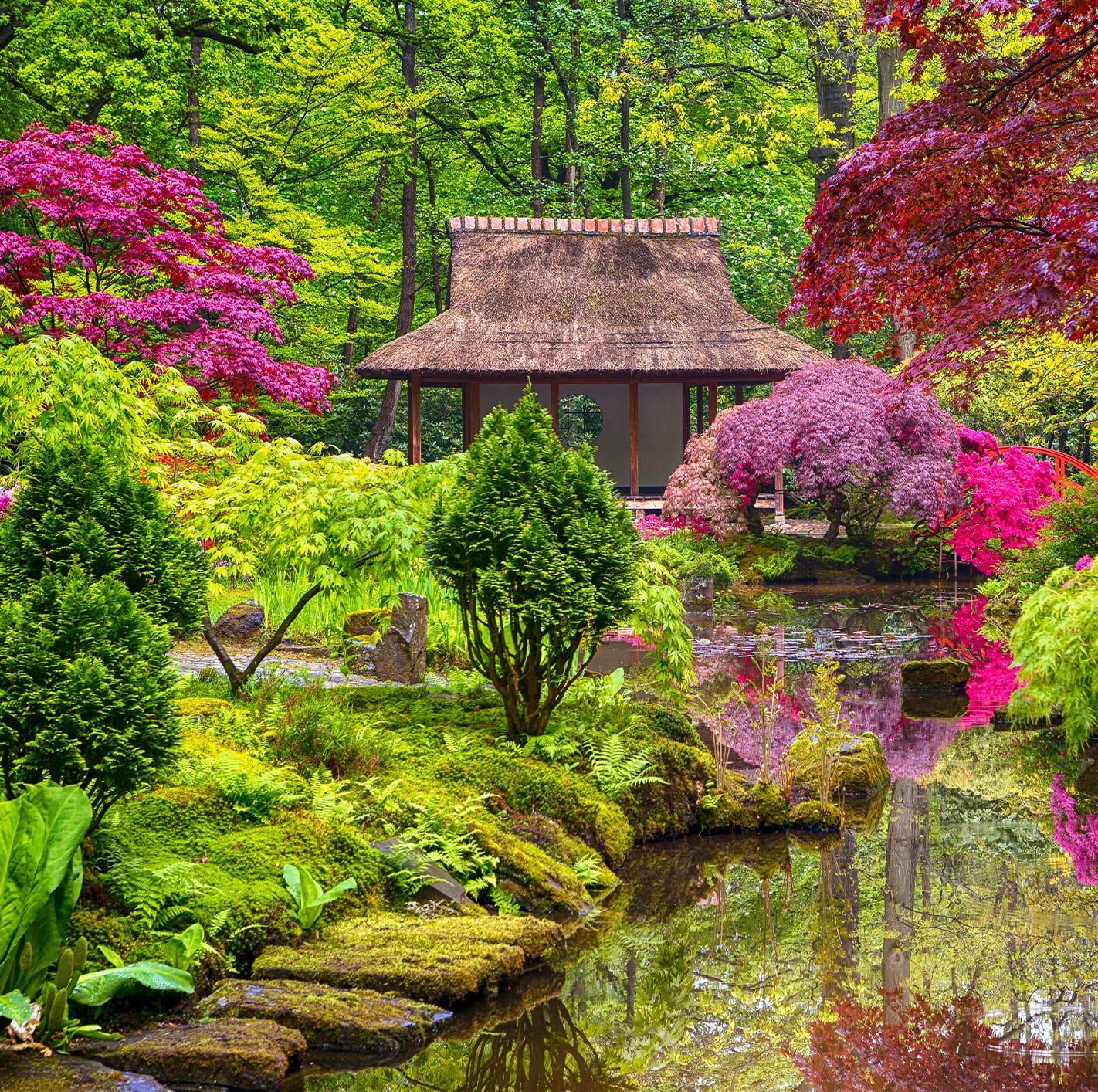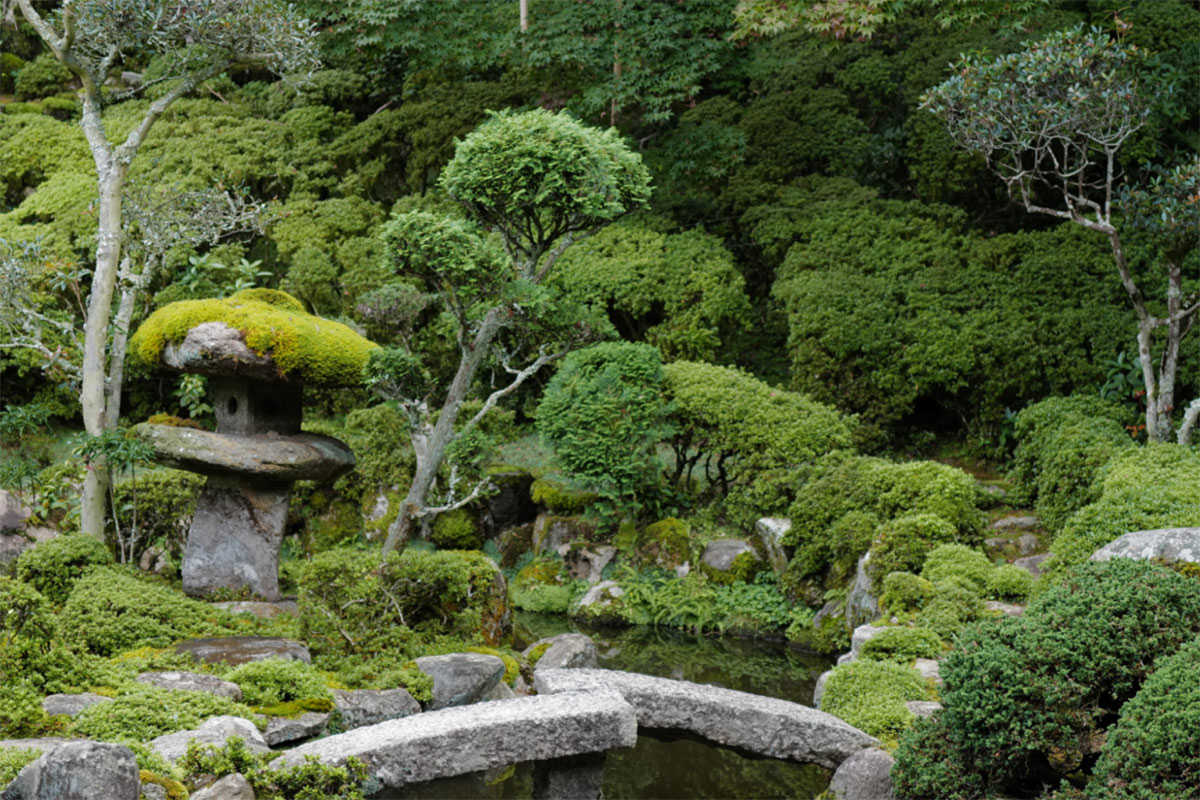Japanese Garden:
Japanese gardens: a serene oasis, harmoniously blending nature and art. Have you ever wondered what makes these gardens so captivating? In this article, we’ll dive into the enchanting world of Japanese gardens, exploring their history, design principles, and the tranquility they offer.
Step into a Japanese garden, and you’ll be transported to a world of tranquility. With carefully curated elements such as flowing water, lush foliage, and meticulously placed rocks, Japanese gardens are like living paintings. Discover the fascinating history behind these gardens, which date back centuries and continue to captivate people around the world.
Get ready to explore the artistry that goes into creating these breathtaking landscapes. Japanese garden design follows specific principles, such as asymmetry and harmony, to create a serene atmosphere. We’ll uncover the secrets behind these design principles and how they contribute to the overall beauty and tranquility of Japanese gardens.
Join us on this journey to uncover the secrets of Japanese gardens and immerse yourself in the beauty of these tranquil havens. From historical insights to design principles, you’ll gain a deeper appreciation for the intricate artistry that makes Japanese gardens so captivating. Get ready for a serene adventure into the mesmerizing world of Japanese gardens!

The Beauty and Tranquility of Japanese Gardens
Discover the allure and grace of Japanese gardens, where nature merges with artistry to create serene and captivating spaces. Immerse yourself in a world of carefully cultivated landscapes, harmonious design principles, and mindful contemplation. In this article, we will explore the elements that make Japanese gardens unique, their cultural significance, and tips on creating your own Zen oasis.
The Origins of Japanese Gardens
Steeped in history and tradition, Japanese gardens trace their roots back to ancient times. They were initially inspired by the Chinese model but gradually evolved into a distinct style characterized by simplicity, asymmetry, and a deep reverence for nature. The earliest Japanese gardens were created as sacred spaces within Buddhist temples and Shinto shrines, designed to facilitate meditation and reflection. These gardens became a pivotal part of Japanese culture, manifesting a deep appreciation for natural beauty and balance.
The Elements of Japanese Gardens
A Japanese garden is a harmonious composition of various elements, each carefully chosen and placed to create a unique aesthetic. The fundamental components of a traditional Japanese garden include:
- Water: A central feature in Japanese gardens, water symbolizes purity, renewal, and constant change. Ponds, streams, and waterfalls are often integrated into the landscape to create a sense of tranquility.
- Rocks and Stones: These natural elements represent mountains and islands and are strategically positioned to evoke a feeling of stability and provide focal points for contemplation.
- Plants and Trees: Carefully selected and pruned, plants and trees are integral to the overall design of Japanese gardens. Moss, bamboo, cherry blossoms, and evergreen trees are commonly used to create a sense of harmony and to celebrate the beauty of each season.
- Bridges and Pathways: Arched bridges and meandering paths encourage visitors to slow down, contemplate, and become fully present in the garden. These architectural features also add visual interest and give a sense of journey and exploration.
- Teahouses and Pavilions: Tea houses and pavilions are often incorporated into Japanese gardens as spaces for relaxation and tea ceremonies. They provide opportunities for visitors to connect with nature and find inner peace.
Key Takeaways | Japanese Garden
- Japanese gardens are traditional landscapes that are designed to reflect natural beauty.
- They often include elements like rocks, water features, and carefully pruned trees.
- Japanese gardens focus on creating a sense of tranquility and harmony.
- These gardens are designed to be enjoyed and appreciated through all seasons.
- Visiting a Japanese garden can be a peaceful and calming experience.
Frequently Asked Questions
Welcome to our frequently asked questions section about Japanese gardens! Here, we’ll answer some common queries about these serene and beautiful spaces. Whether you’re curious about their design principles or the plants typically found in Japanese gardens, we’ve got you covered.
1. What are the main characteristics of a Japanese garden?
Japanese gardens are known for their harmonious and meticulous design. They often include elements such as rock formations, water features, carefully pruned trees, and bridges. The goal is to create a peaceful and balanced environment that allows visitors to connect with nature and find inner tranquility. Every detail in a Japanese garden serves a purpose and is designed to inspire a sense of harmony.
Aesthetically, Japanese gardens emphasize asymmetry, natural beauty, and simplicity. The use of empty space, known as “ma,” is also crucial. Additionally, gardens may incorporate traditional Japanese architectural elements like tea houses or torii gates.
2. What are the key principles behind the design of a Japanese garden?
Japanese garden design is guided by a few core principles. One is “Fukinsei,” or asymmetry, which emphasizes the beauty of imperfection and avoids straight lines and perfect symmetry. Another principle is “Yugen,” which aims to provoke a sense of mystery and depth through a suggestion rather than explicit presentation.
Natural elements, such as stone and water, play a significant role as well. These elements are carefully arranged to create a sense of harmony and balance. The concept of “Shakkei,” or borrowed scenery, is also important. It involves incorporating the surrounding landscape, such as mountains or trees, into the garden’s design to expand its perceived size and enhance its beauty.
3. What types of plants are commonly found in Japanese gardens?
A wide variety of plants can be found in Japanese gardens. Some common choices include cherry blossoms, Japanese maples, bamboo, azaleas, and moss. These plants are selected for their ability to create an atmosphere of tranquility and their visual appeal in different seasons.
Moss is particularly valued in Japanese gardens for its lush green color and ability to thrive in shaded areas. It is often used to cover the ground, rocks, and even entire hillsides. The use of natural patterns and textures in the garden, including plants, adds to its organic and serene ambiance.
4. Can I create a Japanese garden in a small space?
Absolutely! Japanese gardens can be adapted to fit small spaces, such as balconies or even indoor areas. The key is to focus on the essential elements and principles of Japanese garden design. Opt for smaller, compact plants, and utilize different levels, such as raised platforms or stone arrangements, to create depth. By carefully selecting and arranging your elements, you can bring the peaceful ambiance of a Japanese garden to a small space.
Remember, it’s not about size but rather the overall aesthetic and feeling of tranquility that Japanese gardens evoke.
5. Are there any specific rules or etiquettes when visiting a Japanese garden?
While visiting a Japanese garden, it’s important to show respect for the tranquil environment and follow a few etiquettes. First, it’s customary to enter through the designated entrance and follow the designated path. Avoid stepping on garden beds or disturbing the plants.
Be mindful of noise levels and keep conversation volume low to preserve the peaceful atmosphere. It is also customary to remove your shoes before entering a tea house or other buildings within the garden. Finally, adhere to any specific rules or guidelines posted within the garden to ensure everyone’s enjoyment.

[4K] 100 KYOTO GARDENS 京都の日本庭園 100
Summary
Japanese gardens are beautiful and peaceful spaces that have influenced gardens all around the world. They typically feature natural elements like rocks, water, and plants, creating a tranquil atmosphere. These gardens are designed to provide a place for meditation and reflection, allowing people to connect with nature. Japanese gardens are carefully planned and often follow specific principles, such as asymmetry and the use of symbolism. They offer a respite from the busy modern world and a chance to appreciate the beauty of simplicity and harmony.
In addition to their aesthetic qualities, Japanese gardens also have cultural significance. They reflect the values of traditional Japanese society, including respect for nature and a focus on mindfulness. These gardens have a long history that spans centuries, and they continue to be cherished and appreciated today. Exploring a Japanese garden can be a peaceful and educational experience, offering a glimpse into a different culture and a chance to reconnect with nature in a serene setting.
